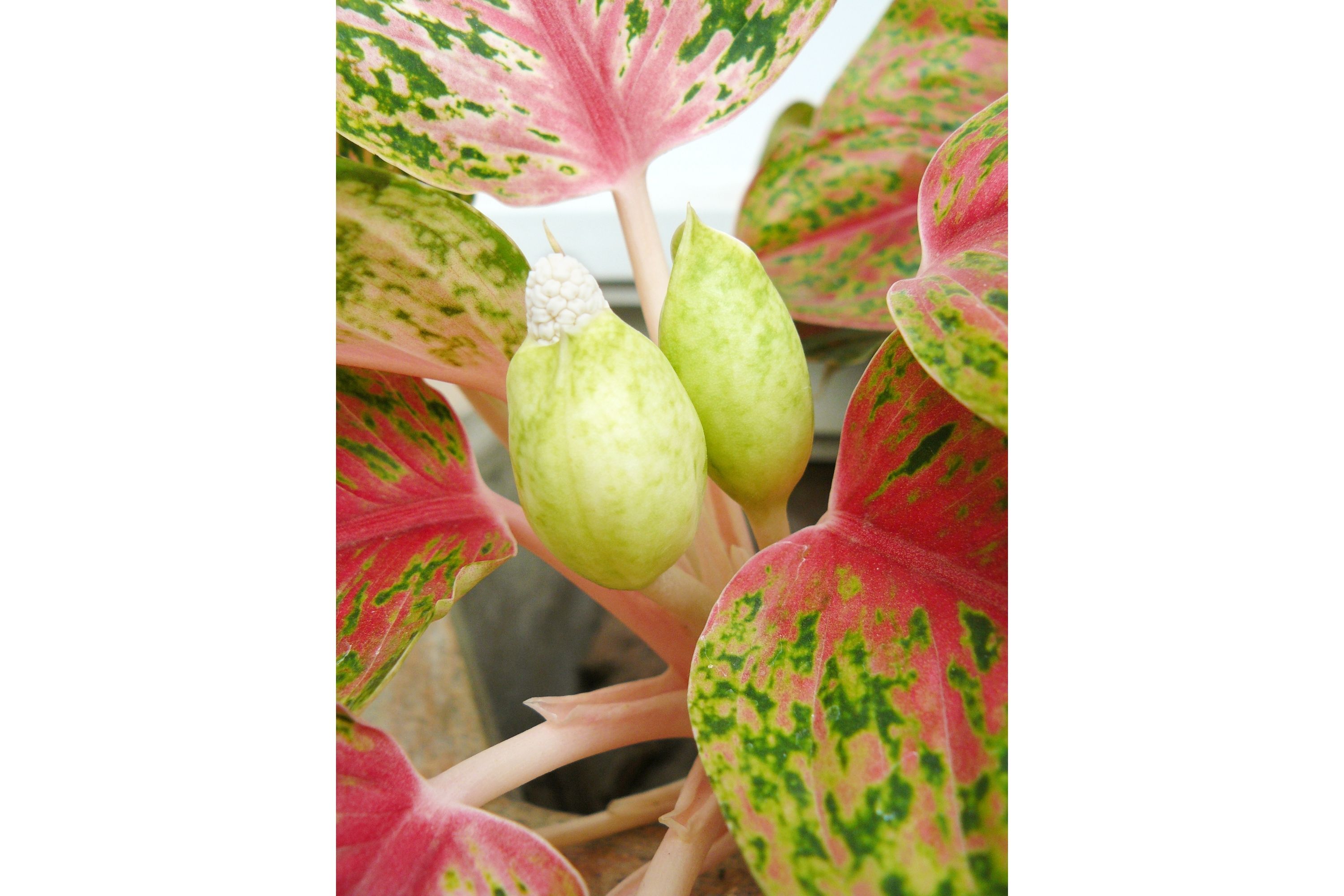Malayan sword
(Aglaonema simplex)

Description
Aglaonema simplex, also known as the Malayan sword is a perennial species of flowering plant in the family Araceae. It is native to Southeast Asia. The Malayan sword is a shrubby plant that grows to about 0.2 to 1.2 m (7.9 in to 3 ft 11.2 in) tall with straight stems. Its dark-green leaves are arranged spirally. The leaves are oval-shaped, with a length between 10 – 35 cm and a width between 1.9 – 25 cm, and sunken veins. The fruits are red and ovoid. The seeds are possibly dispersed by mammals and birds. Its flowers are enclosed in a very greenish-white leaf. They are also a monoecious species. They are pollinated by carrion insects. This species grows relatively slowly. They are suited to moist, well-drained soil although they are tolerant to waterlogging. They prefer to be situated in shaded areas. In addition, they can be propagated with cuttings. They begin to flower between late summer and early autumn. This species contains 20 chromosomes. It also has a high amount of variation, with some individuals having narrow leaves, while others have broad leaves. This flower is usually found wet tropical and sub-tropical forests and freshwater swamps in Bangladesh, Yunnan, Myanmar, Thailand, Laos, Cambodia, Vietnam, Philippines, Malaysia, Indonesia and Singapore. They can be found at elevations between 0 - 1500m. Aglaonema is a genus of flowering plants in the arum family, Araceae. They are native to tropical and subtropical regions of Asia and New Guinea.They are known commonly as Chinese evergreens. The synonym Drynaria lends its name to a certain type of prothallial germination, the 'Drynaria type', observed in several other ferns. In this type, the spores germinate into a germ filament composed of barrel-shaped chlorophyllous cells with one or more rhizoids at the base cell. The tipmost cell divides repeatedly by cross-walls, forming a broad spatulate (spoon-shaped) prothallial plate. One of the cells at the top margin of the prothallus then divides obliquely when it has 5, 10, or more cells across its width. This results in an obconical meristematic cell. Division by this type of cell is parallel to each other and perpendicular to the rest of the cells, forming rows. This eventually results in the formation of a notch at the anterior edge of the prothallus, giving it a roughly heart-shaped appearance (cordate).
Taxonomic tree:







